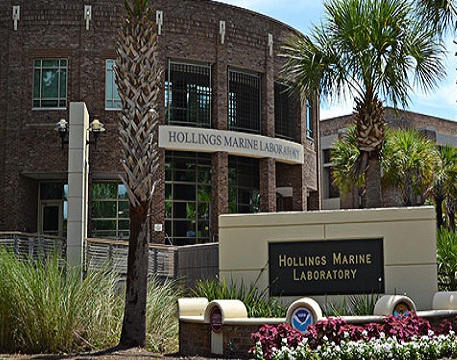Summary
The Organic Chemical Metrology Program exists within the Chemical Sciences Division, MML, which is located at the Hollings Marine Laboratory in Charleston, SC.
Description

The organic analytical facility, located on the second floor of the Hollings Marine Laboratory, consists of two laboratories with a combined area of approximately 215 m2. These two laboratories provide the space and instrumentation to achieve two main functions for NIST: (1) the determination of organic pollutants in reference materials and samples from the marine environment and (2) the assessment of protein composition and structure in reference materials and biological samples. An array of instrumentation is available to scientists working in the NIST organic analytical facility. Sample processing equipment includes:
- Pressurized fluid extraction
- Semi-preparative liquid chromatography including size exclusion chromatography
- Automated solid phase extraction workstations
- Open-focused microwave extraction
- Laboratory evaporators
- Refrigerated and non-refrigerated centrifugation
Instrumentation specifically for analysis includes:
- Matrix Assisted Laser Desorption Ionization (MALDI) time-of-flight mass spectrometer
- Liquid chromatography tandem quadrapole mass spectrometer
- Gas chromatography with single quadrapole mass spectrometers (thee instruments, electron impact and negative chemical ionization)
- Gas chromatography time-of-flight mass spectrometry (electron impact and negative chemical ionization)
- Gas chromatography with electron capture detection
- Liquid chromatography (including nano-liquid chromatography) with linear ion trap mass spectrometry
- Gel imaging system

